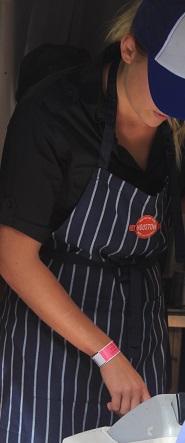Successful business course - learn how to run a successful business in the modern world.

- Modern businesses must embrace and recognize change to thrive.
- Pick your battles - make changes that will be to your advantage; but don't waste time changing things that don't matter.
- Succeed by making sure you know your industry; and you know sufficient to bring about effective changes when needed, in areas of product, finance, marketing and personnel management.
ACS offer you flexibility, support and unlimited tutor access:
Flexibility - you can start the course at any time and progress at a pace that suits you.
Support - this isn't just about the course, we provide new students with an orientation video which will inform you of all sorts of services to support your study.
Unlimited tutor access - you can contact our tutors by telephone or email. They are there to support and guide you in your studies. The support is available for the whole time you are studying.
Learn to Manage Business Finance
- and so much more
Most businesses need to make a profit to continue to exist. Even ‘not-for-profit’ enterprises, or charity organisations, need to at least cover their costs. Costs can include staffing, travel, purchasing items to sell, marketing, fuel bills, and so on. Costs can often be hidden, so it is important for any business to be thoroughly aware of the costs involved in what they are producing or selling.
Initial Finance
 Every business needs money to get started, and money to keep going.
Every business needs money to get started, and money to keep going.
Businesses typically start with an injection of some money that may come from the owner(s), investor(s), borrowed funds (e.g. from a bank), or a combination of these things. This initial amount of money can be very small or very large. Some businesses commence with no more than the meagre savings of an individual owner, while others may commence with borrowings that exceed what any individual might expect to earn across an entire lifetime.
The amount of money invested should always be less than the value of the business.
A significant amount of liquidity should be kept in reserve. Don’t spend everything you have available. Businesses are often started with a budget that may be based upon spending only between 50 and 70% of the finance available; and keeping 30 to 50% in reserve.
It is important to recognise that cash flow is not only affected by the rate at which money flows out of a business; but also the rate at which it flows in.
Any viable business will have both debtors and creditors. Some people or organisations will be taking money out of the business, and others will be paying money into the business.
There needs to always be a balance between what is being paid out and what is being paid in.
If a business has more money owed to it than what it owes to others it should be seeing a profit - but that is not always the case. Consider a business that tolerates customers delaying payments for months while employees, contractors and suppliers are always paid on time. It is feasible that more money may be spent each month than what is received. Over time, this can lead to a depletion of cash reserves.
Also consider how you are paid. If you have a business selling books, for example, every time you sell a book you will make money. But say you have a business offering a longer term service, for example, painting and decorating. You may not be paid for weeks or even months if you are painting a large building. If this is the case, you need to carefully balance your finances to ensure that you budget for the months when there will be no income. You may have to ask for a deposit, or part payments for work completed.
Make More Than You Spend
To remain financially viable a business must take in more money than it spends (i.e. Income must exceed expenditure). This is a simple rule; but one that is far more complex to follow than it is to state. That is why a business course like this is so valuable.
The costs of a business are a major factor. Look at the costs involved in running your business. Are they too high or are you not spending enough? What costs are there? As a successful business owner you need to know your numbers.
Pricing
What we sell our product or service for is definitely a major part of how successful a business is. If you do not sell your product for the right price, it can impact on your profit.
- Sell your product too cheaply and you may not make enough profit.
- Sell it too cheaply and customers may think it is not of good quality.
- Sell a product at too higher a price and it may not sell.
Finding the optimum price for your product is essential. You need to determine whether the price is right, but how do you work out the right price for a product?
Selling a Service
If offering a service, then you can begin by looking at industry recommended standards for hourly rates. You might also find out the range of fees that others in your region are charging for the same, or a similar, service. If you, or your staff, are relatively inexperienced you may begin at the lower end of the price range and gradually increase fees as your business and experience grows.
Someone with specialist skills, or a great deal of experience, would be more likely to charge at the upper end of the range. The important factor here though is not to overcharge. Clients and customers will feel aggrieved if they think they are paying too much for your service, no matter how skilled or qualified you are. Once again, it is a question of striking a balance between what you could or should be charging and what people are happy to pay. Don’t sell yourself short, but don’t overcharge.
Selling a Product
If you are selling products then you have to sell them at a profit to keep your business afloat. If you can buy in bulk, then you can usually buy your products at a lower price and sell them at a lower price if you need to, or you want to make more sales. This is what the big supermarkets and department stores do. It is also why they can put on sales where prices are slashed by up to 70-80%.
When deciding on what to charge for your products, you have to think about:
- What price people are willing to pay.
- The profit margin needed to cover your overheads and leave some left over.
If you are selling a unique product then you can charge more for it since you have little direct competition. Nevertheless, even if you are selling something unique you need to be careful about not setting your prices too high. If you do, people will source an alternative or simply not buy your product. You also run the risk that others who have observed your high prices will then copy your product and undercut your prices.
If you are the only outlet for a particular product in a particular area then you may be able to set higher charges for the product e.g. a petrol service station in a remote region or the only grocery store in a holiday resort.
Setting the Price
 If you sell a wide range of products a simple method of setting the price is to apply the same mar-up to each product. Let’s say product X costs you $10.00. If you were to mark-up all your products by 50% you would sell product X for $10.00 + 50% = $15.00.
If you sell a wide range of products a simple method of setting the price is to apply the same mar-up to each product. Let’s say product X costs you $10.00. If you were to mark-up all your products by 50% you would sell product X for $10.00 + 50% = $15.00.
This method might be useful if other methods are too complicated but it tells you little about the rest of your business and how well you are doing overall.
Other methods give you more understanding and greater control over price setting. The most crucial thing to know is how much your product costs overall. This will help you to determine how much mark-up to add to your price (and how many you need to sell) in order to make a profit.
The cost of a product is not simply what it costs your business to buy it in the first place. It also includes your fixed costs.
Fixed costs include your overheads e.g. shop rental fees, website fees, staff wages, and so forth. Fixed costs remain the same regardless of sales.
You also have variable costs. These are directly related to sales. They usually go down as sales go down, and up when sales increase. They include things like delivery charges, cost of raw materials and labour, and staff bonuses.
Once you know what your fixed and variable costs are, you can set about working out your break-even point – the point at which sales cover expenses.
Break-even point = Fixed Costs / Price – Variable Costs
If sales fall below the break-even point then you will make a loss. If they are higher than the break-even point then you will make a profit.
Let’s say your sales begin to drop off and you cannot reach the break-even point then according to the formula there are two options.
- Cut your costs – fixed and/or variable.
- Increase the product price.
In any business, you have to cover your costs in order to continue to sell a product but in the long term you need to make a profit to make it worthwhile.
If you cannot set a profit margin which will make you some money and be competitive in the market place and you cannot cut your costs any further then you may have to drop the product for one you can make more profit on or which has less competition from other products.

Are you ready to Enrol or do you have any questions?
Our tutors are more than happy to answer any questions, so please click here to ask a question.
Request a copy of our handbook here.